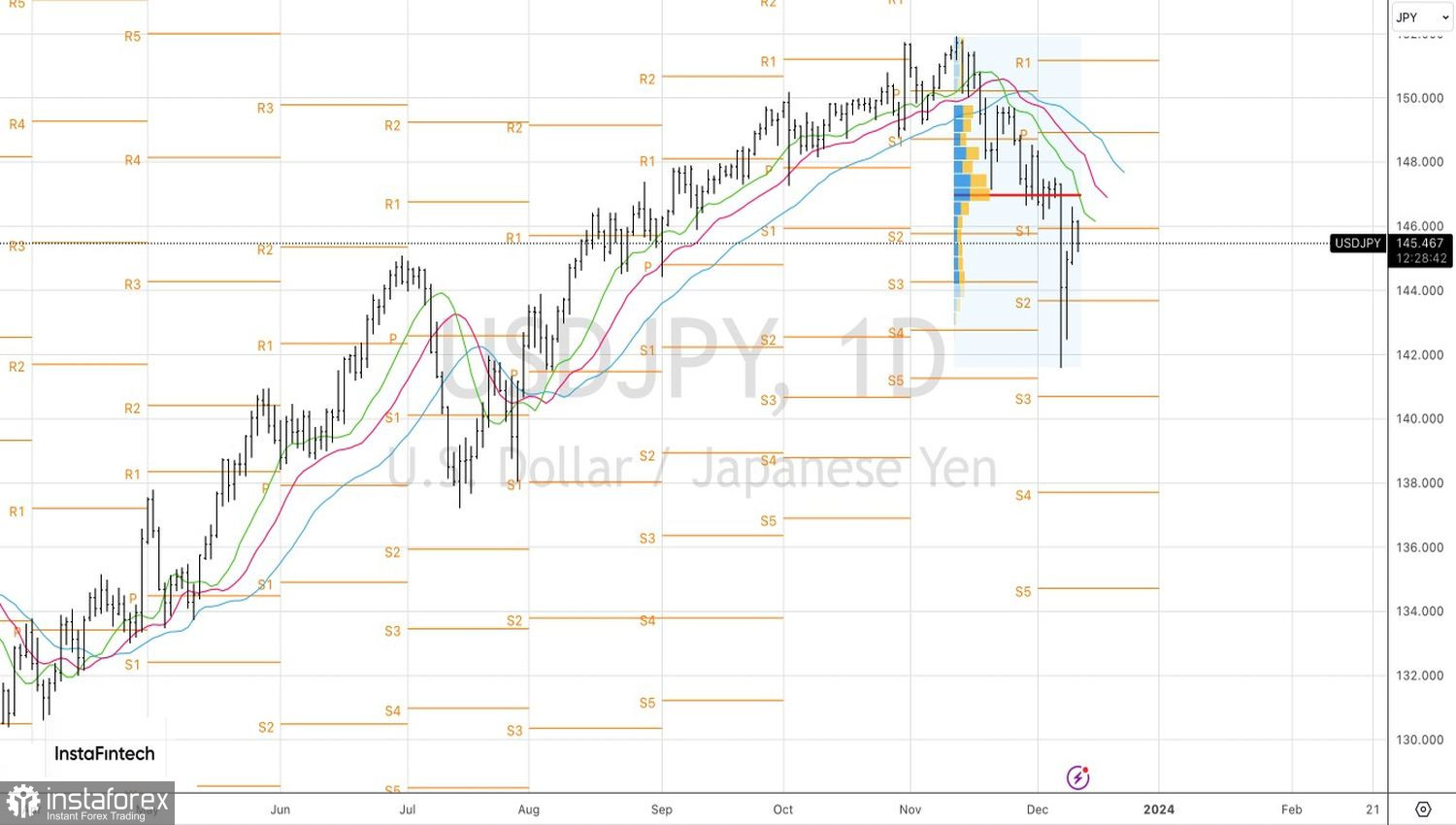The rollercoaster ride of USD/JPY has left investors breathless and bewildered. They still can't figure out whom to trust. Is it Bank of Japan Governor Kazuo Ueda and his deputy Ryozo Himino dropping hints about the normalization of the Bank of Japan's monetary policy? Or is it Bloomberg's insider information claiming that the BoJ has little reason to make changes to existing programs in December? The central bank is likely to wait for confirming signals from wages, and it is unlikely to take any action until April.
It's been a while since we witnessed such a rapid decline in USD/JPY, perhaps since December of last year, when former BoJ head Haruhiko Kuroda and his colleagues decided to stir the markets with announcements about expanding the target range for the yield on 10-year bonds. At that time, it was perceived as the first step towards normalizing monetary policy, causing investors to take a closer look at the yen.
In reality, the rumors turned out to be greatly exaggerated. The new head of the central bank, Ueda, continued the work of his predecessor. Only at the end of the year did his comment that things would get tougher be interpreted by the markets as a signal of monetary restriction. Derivatives are anticipating an increase in the overnight rate by 30 bps in 2024. That is, in one or two meetings of the Board of Governors. Considering the forecasts for a 100 bps rate cut in federal funds, the divergence in monetary policy is bound to push USD/JPY quotes down.
Unfortunately, fundamental data does not justify tightening the BoJ's monetary policy. Japan's GDP shrank by 2.9% in the third quarter, and producer prices in November slowed to the lowest level in almost three years.
Inflation Dynamics in Japan

However, no matter how the rope twists, the end is always the same. Sooner or later, Tokyo will have to abandon the policy of negative interest rates, which distorts the readings of the country's financial markets and leads to capital outflows in search of more lucrative investments. Bloomberg's surveyed experts cite April as the most likely start date for this process. The futures market estimates the chances of December at 8% and January at 46%.

The fate of USD/JPY depends not only on the actions of the Bank of Japan but also on the dynamics of U.S. Treasury yields. Its rise after the release of U.S. employment data for November became a catalyst for the rebound of the dollar against the yen. However, according to investor surveys by MLIV Pulse, yields on 10-year bonds will collapse to 3.8% by the end of December 2024. The downward trend allows us to predict a decline in the quotes of the analyzed pair below 140 in the first quarter of next year.
Technically, on the daily chart of USD/JPY, after playing out the inside bar, the bulls failed to break through the cluster of pivot levels at 145.8–146.0. This circumstance indicates their weakness and provides grounds for selling the U.S. dollar against the Japanese yen towards the previously mentioned target at 142.5.





















